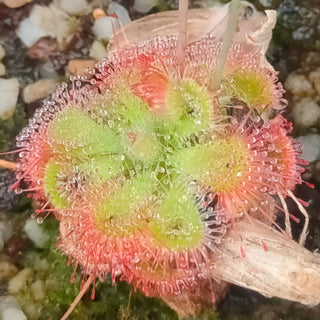Iris siberica
SIBERIAN IRIS ROSE
- Unit price
- / per
Iris sibirica, commonly known as Siberian iris or Siberian flag, is a rhizomatous herbaceous perennial with long leaves, tall stems, holding numerous violet-blue to blue, and occasionally white flowers. It is cultivated as an ornamental plant in temperate regions.
Iris sibirica is native to Europe and Central Asia, and has been naturalized in various states of North America including in Canada Ontario, and in the USA Connecticut, Maine, Massachusetts, New York, Pennsylvania, Virginia and California. Siberian Iris is considered vulnerable or rare in many countries.
It is found in nature growing in damp woodlands, wet meadows, grasslands or pastures, along lakes, and beside streams, and ditches beside roadsides.
They can also be used within a Herbaceous border. The iris can also be used in mixed plantings with grasses and other perennials to create naturalised gardens and meadows. They also also good at waterside locations beside pools, ponds or streams, and are ideal bog garden plants.
It prefers positions in full sun in most areas, but can tolerate part shade. Especially in very hot, arid regions, they will need some shade, as well as watering and mulching.
The iris will tolerate temperatures down to -20 °C (-4 °F). It is hardy to USDA Zone 2–8, and if the plants are mulched in winter they can withstand zone 1.
They are sturdy plants and do not need to be staked.
Very limited supply.
Type: Hardy perennial
Height: 75cm, 30"
Location: Sun or part shade
Hardiness zones: 2-8, sometimes zone 1.
Seeds per packet: 5
Scratch each seed with sand-paper, or on a rough stone or brick. Plant seeds just barely below the surface of the soil and water in. Leave them at room temperature for 4 weeks. This helps break the phytohormones which inhibit germination. They will not grow yet. Then a cooling period is required. Cover them with plastic and place in a fridge for 45 days. Be sure they stay moist. After the cold stratification period they are then brought back to a cool room (18°C, 68°F) for them to germinate. Germination is generally 30-60 days after the warming period, though some can take longer.
Ornamental use only. These seeds and/or plants are poisonous.
Iris siberica
SIBERIAN IRIS ROSE
- Unit price
- / per
Multiple secure payment options available.
Adding product to your cart
You may also like
Iris sibirica, commonly known as Siberian iris or Siberian flag, is a rhizomatous herbaceous perennial with long leaves, tall stems, holding numerous violet-blue to blue, and occasionally white flowers. It is cultivated as an ornamental plant in temperate regions.
Iris sibirica is native to Europe and Central Asia, and has been naturalized in various states of North America including in Canada Ontario, and in the USA Connecticut, Maine, Massachusetts, New York, Pennsylvania, Virginia and California. Siberian Iris is considered vulnerable or rare in many countries.
It is found in nature growing in damp woodlands, wet meadows, grasslands or pastures, along lakes, and beside streams, and ditches beside roadsides.
They can also be used within a Herbaceous border. The iris can also be used in mixed plantings with grasses and other perennials to create naturalised gardens and meadows. They also also good at waterside locations beside pools, ponds or streams, and are ideal bog garden plants.
It prefers positions in full sun in most areas, but can tolerate part shade. Especially in very hot, arid regions, they will need some shade, as well as watering and mulching.
The iris will tolerate temperatures down to -20 °C (-4 °F). It is hardy to USDA Zone 2–8, and if the plants are mulched in winter they can withstand zone 1.
They are sturdy plants and do not need to be staked.
Very limited supply.
Type: Hardy perennial
Height: 75cm, 30"
Location: Sun or part shade
Hardiness zones: 2-8, sometimes zone 1.
Seeds per packet: 5
Scratch each seed with sand-paper, or on a rough stone or brick. Plant seeds just barely below the surface of the soil and water in. Leave them at room temperature for 4 weeks. This helps break the phytohormones which inhibit germination. They will not grow yet. Then a cooling period is required. Cover them with plastic and place in a fridge for 45 days. Be sure they stay moist. After the cold stratification period they are then brought back to a cool room (18°C, 68°F) for them to germinate. Germination is generally 30-60 days after the warming period, though some can take longer.
Ornamental use only. These seeds and/or plants are poisonous.

















































